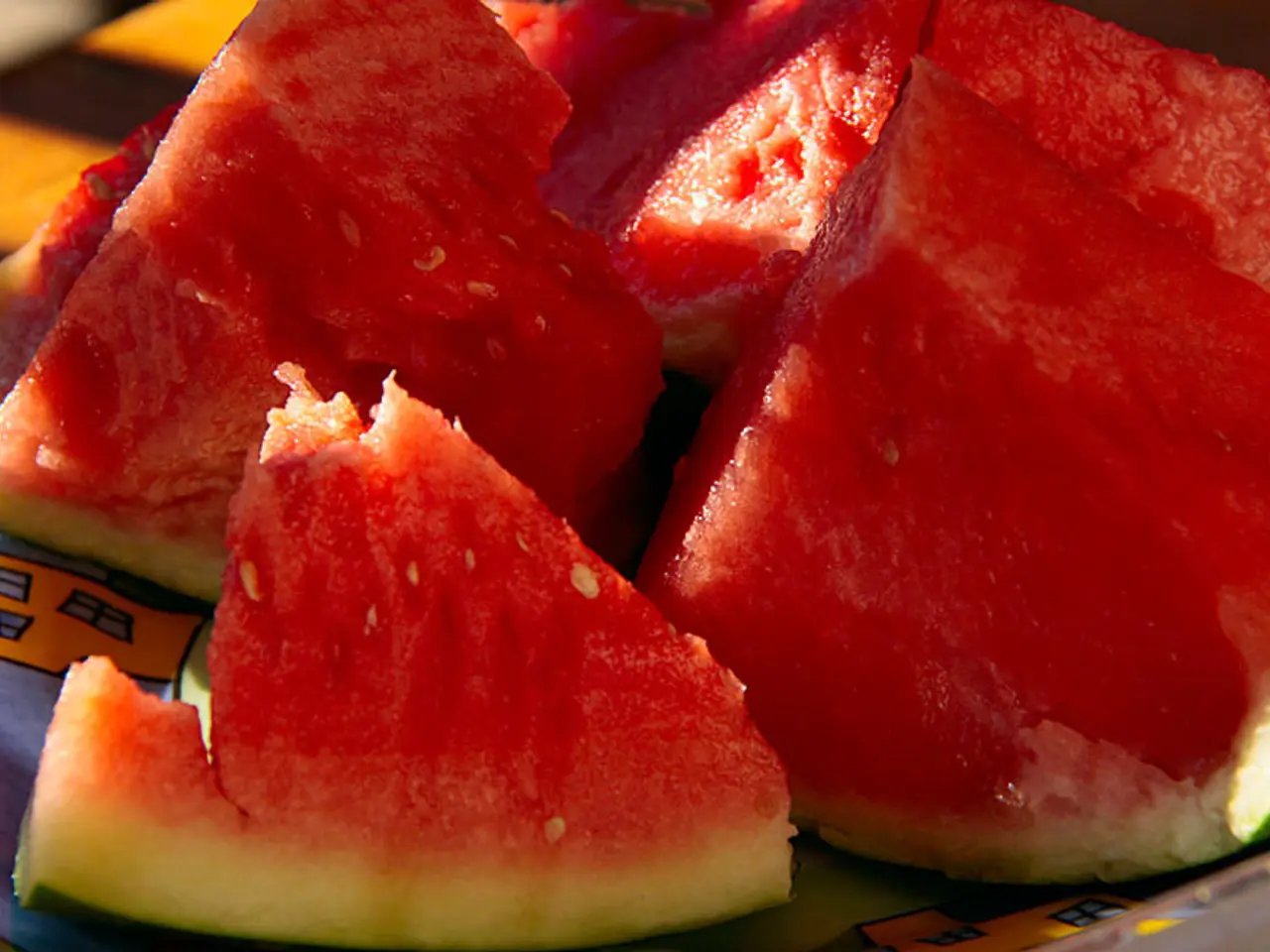Reusing watermelon peels uncovers their hidden nutritional benefits as a superfood
Watermelon rind, often discarded, is gaining attention as a nutritional powerhouse and a sustainable ingredient in cooking and smoothies. This overlooked part of the watermelon is packed with fibre, antioxidants, heart-friendly amino acids, vitamin C, insoluble fibre, and phosphorus[1][2][4].
Julie Stefanski, a spokesperson for the Academy of Nutrition and Dietetics, highlighted that the watermelon rind is "very high in fibre," making it a valuable addition to any diet[3]. The amino acid citrulline, a key component of watermelon rind, is known for improving circulation and enhancing exercise performance[1]. In fact, one cup of watermelon has about 250-300 mg of citrulline, while the rind has about 60% more than the red flesh[1].
The green skin of watermelon rind can be bitter, but the white part tastes like cucumber[2]. Preparing the rind for consumption often involves peeling the tough outer green layer and using the white part, which is more palatable and nutrient-dense. It can be pickled, blended into smoothies, sautéed in stir-fries, used in chutneys, or grated into salads[2].
In culinary uses, watermelon rind can reduce food waste and is incorporated in various ways. In smoothies, for instance, its mild flavor and nutrients can be blended smoothly, promoting vascular health and muscle recovery[1][2]. It is recommended to introduce rind gradually into the diet to avoid digestive discomfort[1][2].
Watermelon, being around 92% water, is a good way to rehydrate during the summer months[5]. Thoroughly washing the watermelon before slicing is recommended to prevent bacteria from the outer skin contaminating the edible parts[6].
Despite the potential benefits, it is essential to note that the safety of eating watermelon rind has not been explicitly stated in the article. Experts advise going slow when eating watermelon rind for the first time due to its fibrous nature, which can cause bloating, gas, or diarrhea[7].
Nutritionists genuinely back the benefits of eating watermelon rind, suggesting it could save money, cut food waste, and boost health[8]. So, it's not just a TikTok wellness trend, but a potentially beneficial practice supported by nutritionists.
References:
- Watermelon Rind: Nutrition, Benefits, and Uses
- Watermelon Rind: A Frugal and Nutritious Delight
- Watermelon Rind: A Rich Source of Fibre
- Watermelon Rind: A Nutritional Powerhouse
- Stay Hydrated: Watermelon
- Food Safety: Washing Fruits and Vegetables
- Watermelon Rind: Eating for the First Time
- Watermelon Rind: A Sustainable Superfood
- The watermelon rind, a nutritional powerhouse, offers numerous benefits such as fiber, antioxidants, and heart-friendly amino acids, making it a valuable addition to a health-and-wellness lifestyle.
- Incorporating watermelon rind into global cuisines through cooking methods like pickling, grating, and sautéing not only reduces food waste but also promotes a sustainable lifestyle.
- Healthy cooking with watermelon rind in food-and-drink recipes like smoothies can provide benefits such as vascular health and muscle recovery, contributing to fitness-and-exercise routines.
- As a source of citrulline, a key component improving circulation and exercise performance, watermelon rind is becoming increasingly popular in the realm of science and wellness, proving that it's not just a passing food trend, but a potentially beneficial practice.




